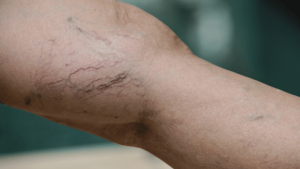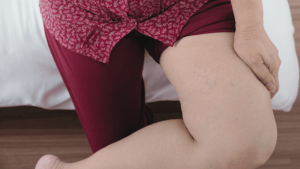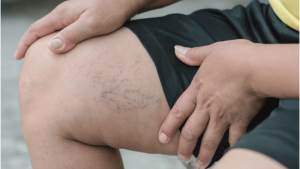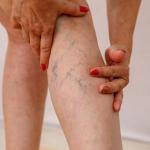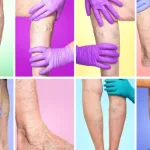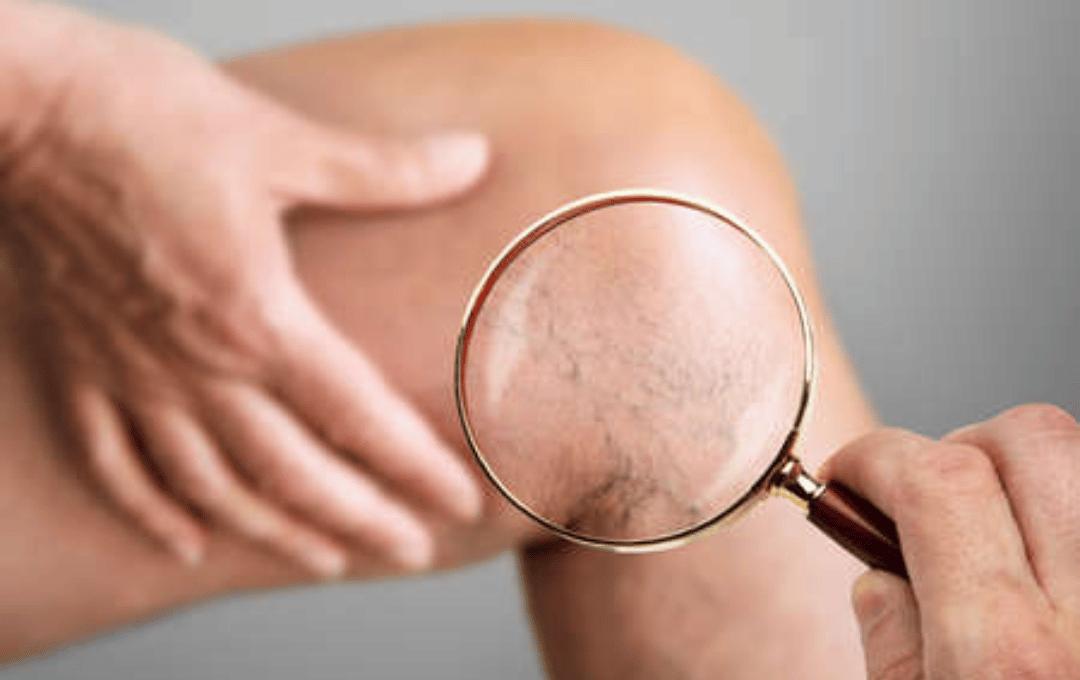
Have you ever noticed those blue or purple lines running along your skin? These are superficial veins located close to the surface of your body. But did you know there are also deep veins hidden beneath the skin?
Understanding the distinction between superficial and deep veins is important because both play a crucial role in your circulatory system. Recognizing the signs of vein health problems can help you seek early treatment and prevent complications.
Every year, around 150 thousand people in the United States are diagnosed with vein disease. This disease can cause a number of symptoms, including varicose and spider veins. They can also cause pain and discomfort that affects day-to-day living.
If you have vein disease, or suspect you have it, contact USA Vein Clinics to get screened. They offer comprehensive evaluations and a variety of treatments that can address vein health issues.
What Are Superficial Veins?
Superficial veins are the visible veins located in the fatty layer under the skin. They become more prominent after heavy lifting or intense exercise, but in areas like the hands and neck, you might be able to see them all the time.
These veins help regulate the body’s temperature. When you’re hot, they widen to allow more blood flow near the skin’s surface and release heat. When it’s cold, they narrow out to minimize heat loss.
There are two main kinds of superficial veins located in the lower extremities.
- The Great saphenous vein (GSV) is the longest vein in the entire body. It returns blood from the thigh, calf, and foot to the deep femoral vein at the femoral triangle in the upper thigh.
- The Lesser saphenous vein is smaller and runs along the back of the leg.
- Both veins return blood from the legs to the deep venous system.
Signs of Superficial Veins
- Located just below the surface of the skin
- Not surrounded by muscles, making them more visible
- Typically carry less blood than deeper veins
- Serve as a pathway for blood to return to deeper veins
Symptoms of Superficial Vein Problems
- Noticeable varicose or spider veins
- Pain or a pulsing feeling in your legs
- Swelling, especially in your ankles and feet
- A tingling or burning sensation near the veins
- Changes in skin color or appearance.
Superficial vein problems, like varicose or spider veins, can hinder normal blood flow in the legs. When veins weaken, blood can pool, causing increased pressure and symptoms such as pain, swelling, or a tingling sensation. Over time, this can lead to skin changes and chronic discomfort.
What Are Deep Veins?
Deep veins are blood vessels that are responsible for transporting deoxygenated blood from your muscles and tissues back to the heart. These veins are usually found next to the major arteries with the same names. Major deep veins found in the lower limbs include:
- Popliteal vein (behind the knee)
- Peroneal vein (in the lower leg)
- Profunda femoris vein (deep in the thigh)
- Common femoral vein (in the thigh, closer to the surface)
- Femoral vein (running through the thigh)
- Anterior tibial vein (in the front of the lower leg)
- Posterior tibial vein (in the back of the lower leg)
Signs of Deep Veins
- Located deeper within muscle tissues
- Surrounded by muscles, making them less visible
- Carry the majority of blood flow back to the heart
- Play a crucial role in maintaining overall circulation
Symptoms of Deep Vein Problems
- Swelling, particularly in the legs, ankles, or feet
- Pain or cramping in the calf or thigh muscles
- A heavy or tight feeling in the affected limb
- A tingling or burning sensation near the veins
- Changes in skin color or appearance, such as redness or a bluish hue
- Warmth or tenderness around the area of the affected vein
Deep vein problems can significantly impact blood circulation since these veins carry the bulk of blood back to the heart. Unlike superficial vein issues, which primarily cause discomfort or visible changes like varicose veins, deep vein issues can obstruct blood flow, leading to more serious conditions such as deep vein thrombosis (DVT). This can result in swelling, pain, and potential complications like blood clots traveling to the lungs, a condition known as a pulmonary embolism.
Treatments for Superficial and Deep Veins
Several minimally invasive options are available for treating deep and superficial vein issues, such as varicose and spider veins. These procedures work by closing off damaged veins so blood is redirected to healthier veins, improving circulation and reducing symptoms.
Learn more about the non-surgical vein treatments offered at our clinics:
- Endovenous Laser Vein Treatment (EVLT)
- ClariVeinⓇ Treatment
- Varithena Vein Treatment
- Radiofrequency Ablation (RFA)
- Ultrasound-guided sclerotherapy
- Visual Sclerotherapy
- VenaSeal™
Minimally invasive vein treatments offer minimal recovery times and effective results, helping patients return to daily activities quickly while addressing their vein concerns.
Schedule Your Consultation Online
The Difference Between Superficial and Deep Veins
While both veins are essential for blood circulation, deep veins handle the bulk of the work, transporting blood from the body’s core tissues back to the heart. Superficial veins play a supporting role, primarily collecting blood from the smaller vessels and feeding it into the larger, deeper veins.
Deep veins are responsible for the majority of the venous blood flow. They carry about 90% of the blood in the lower limbs back to the heart, while superficial veins transport the other 10% of venous blood flow.¹
Key Differences:
- Size: Superficial veins are smaller than deep veins.
- Valves: Both vein types have valves to ensure blood flows in the right direction, but deep veins typically have more valves due to their role in returning blood from deeper tissues to the heart.
- Muscle Support: Deep veins are surrounded by muscle, which helps pump blood upward, while superficial veins lack this muscle support, causing blood to flow more slowly.
Are Varicose Veins Deep or Superficial Veins?
Varicose veins, which are abnormally swollen or dilated veins, can occur in either superficial or deep veins.
Varicose veins are caused by a condition called chronic venous insufficiency (CVI), which occurs when the valves become damaged and stop working properly, causing blood to flow backward. This condition can worsen over time, leading to progressive symptoms.
Vein damage results from several different risk factors, such as age, heredity, obesity and a sedentary lifestyle. Women are also more likely to develop CVI.
In its early stages, chronic venous insufficiency can cause spider veins — small blood vessels under the skin that look like spider webs — along with varicose veins and leg swelling. As CVI progresses to later stages, it can cause more severe symptoms, such as leg pain, a feeling of heaviness in lower limbs, and venous ulcers.
When chronic venous insufficiency impacts superficial veins, bumpy, rope-like varicose veins appear on the legs. A person with superficial varicose veins might also have damaged deep veins, even though they aren’t visible.
Deep varicose veins can only be seen with ultrasound imaging technology because they’re located in the muscles and along the bones of the legs rather than under the skin. However, they can cause other varicose vein symptoms, including throbbing, aching pain, and leg fatigue.
Varicose veins can also increase the risk of a blood clot, so it’s important to monitor your vein health and see a specialist if you notice symptoms.
Deep Vein Thrombosis vs. Superficial Thrombosis
A blood clot (thrombosis) can form in both deep and superficial veins. The location of where it forms impacts how dangerous it can be.
Location of DVT vs. Superficial Thrombosis
- Deep vein thrombosis (DVT) is a blood clot that forms inside a deep vein. It’s most common in the lower limbs or pelvis but can form in a deep vein anywhere in the body.
- Superficial thrombosis is a blood clot in a superficial vein that can cause superficial thrombophlebitis. As with DVT, a blood clot in a superficial vein is most likely to occur in the lower limbs, but veins in the arms or neck can also be affected.
Risk Factors for DVT vs. Superficial Thrombosis
- DVT can be dangerous because blood flow back to the heart can become blocked, which can cause a dramatic increase in blood pressure, vein damage, and inflammation (post-thrombotic syndrome). If a clot breaks away and travels to the lungs (pulmonary embolism), it can stop the body from absorbing oxygen, which can be fatal without immediate medical attention.
- Superficial thrombophlebitis isn’t as dangerous as DVT. It is the inflammation of the superficial veins caused by a blood clot. However, like chronic venous insufficiency and varicose veins, it can bring pain and discomfort and also increase the chances of developing another blood clot in a deep vein.
Taking care of your vein health by exercising regularly, maintaining a healthy weight, and getting regular vein check-ups is important for preventing blood clots from developing in your veins. You don’t want a clot to form in either type of vein, as even superficial thrombosis can damage vein walls and valves and raise your risk for DVT.
Damaged veins require treatment to restore healthy blood flow and reduce the risk of blood clots.
Take Control of Your Vein Health with USA Vein Clinics
USA Vein Clinics offers multiple minimally invasive vein procedures to treat varicose veins and spider veins. These treatments can alleviate uncomfortable vein disease symptoms and reduce the chance of developing complications.
Our experienced vein specialists also provide comprehensive vein screenings to identify any problematic veins, including deep veins that might be damaged or at risk of developing a blood clot.
Take control of your vein health with the help of the trusted doctors at USA Vein Clinics. Schedule a consultation with a vein specialist at one of our clinics today.
Sources
- Pasha Normahani, Joseph Shalhoub, & Sriram Narayanan, “Repurposing the systemic venous return model for conceptualization of chronic venous insufficiency and its management,” Phlebology, https://www.ncbi.nlm.nih.gov/pmc/articles/PMC7675772/

